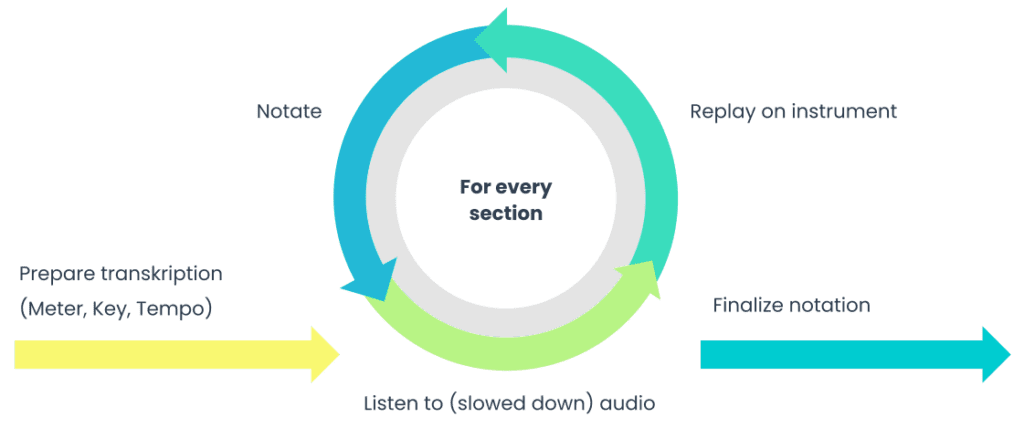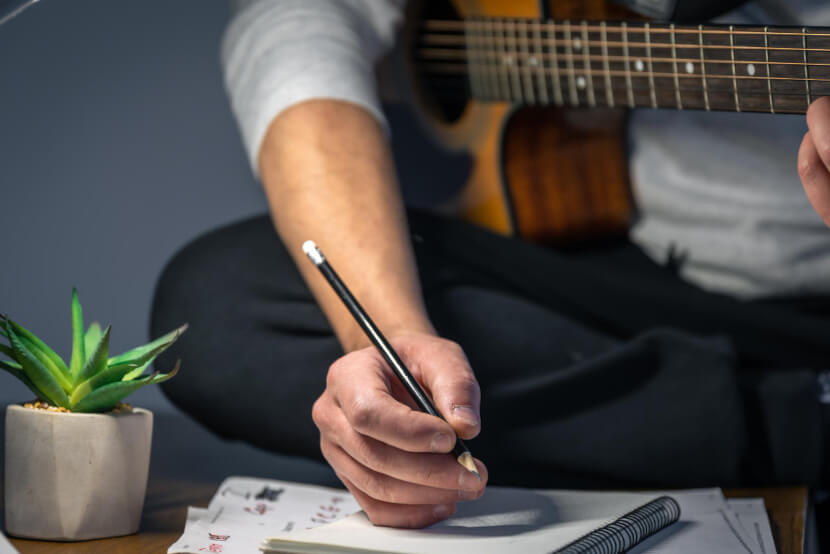Welcome to the enriching world of music transcription, an essential skill for any musician seeking to deepen their understanding and appreciation of music. Here at Klangio, we’re dedicated to blending traditional transcription techniques with the latest AI advancements, offering you the best of both worlds. Whether you’re a budding musician or an experienced maestro, this guide is designed to help you navigate the intricate process of transcribing music. From identifying the nuances in a melody to accurately notating rhythm and harmony, we’ll guide you through each step, ensuring you have a comprehensive understanding of this valuable skill.
Essential Tools for Music Transcription by Hand
Embarking on the journey of music transcription requires a set of specialized tools. First and foremost, slow-down software like Anytune or Audacity is crucial. It allows you to listen to complex music segments at a slower speed, facilitating easier identification of notes and rhythms without affecting the pitch. For those who play an instrument, having it nearby is invaluable for testing and replicating sounds. Alternatively, musicians can rely on the playback feature of notation software, which is particularly useful for instruments they don’t play. Speaking of notation software, choices range from free options like MuseScore to professional-grade software like Sibelius and Finale, each offering unique features to aid in creating clear and accurate musical scores.

Preparing the Transcription
The first step in music transcription is preparation, which involves understanding the structural elements of the piece. Determining the meter is critical; it dictates the rhythmic framework and helps in segmenting the music accurately. Understanding whether the piece is in a common time signature like 4/4 or something more complex like 7/8 sets the stage for the entire transcription process. Next, identifying the key is vital as it provides insights into the harmonic structure and helps in anticipating chord progressions. Lastly, setting the tempo is crucial. While the original tempo gives a sense of the piece’s mood and energy, adjusting it using slow-down software can make intricate parts more accessible, allowing for a more detailed and accurate transcription.
Transcription Loop
This process is iterative and should be repeated for each segment (e.g. bar or section) of the song:
Step 1: Listening to the Segment
Listen attentively to a segment of the piece using slow-down software. Focus on capturing every detail.
Step 2: Replay on Instrument or Use Playback Feature
Either play the segment on your instrument or use the playback feature in your notation software to verify what you’ve heard.
Step 3: Notating the Music
Start notating the segment in your notation software, taking care to represent what you’ve heard accurately.
Finalizing the Transcription
Finalizing your transcription is a critical phase that involves refining and detailing your initial work. This is where you add the finer nuances that bring the piece to life. Include details like beaming, articulations, and dynamics to convey the musical expression accurately. Once the basic transcription is complete, it’s imperative to review and edit your work. This step is about ensuring that every note, rhythm, and dynamic marking accurately reflects the original piece. The final playback, comparing your transcription against the original music, is crucial for catching any overlooked elements and for validating the integrity and accuracy of your transcription.
Conclusion
Transcribing music is more than just a technical skill; it’s a journey into the heart of music itself. It requires patience, a keen ear, and a deep understanding of musical elements. At Klangio, we celebrate the fusion of traditional transcription techniques with modern AI technology, enhancing the way music is transcribed and understood. As you embark on your transcription endeavors, remember that each piece you transcribe enriches your musical vocabulary and hones your skills. We encourage you to embrace the challenges and joys of transcribing music. Let this guide be your companion in this rewarding journey of musical exploration and growth.

